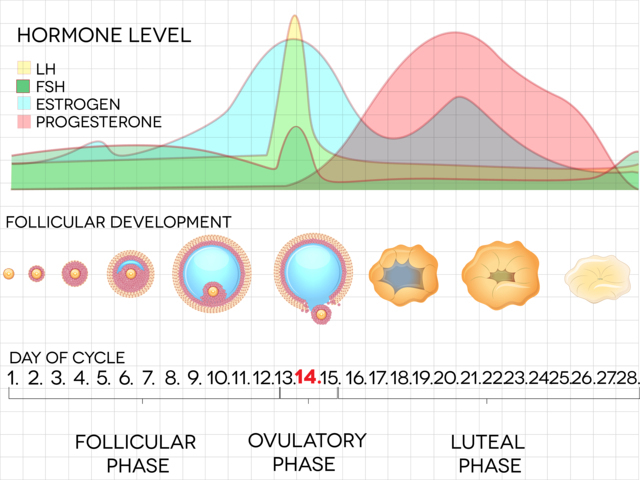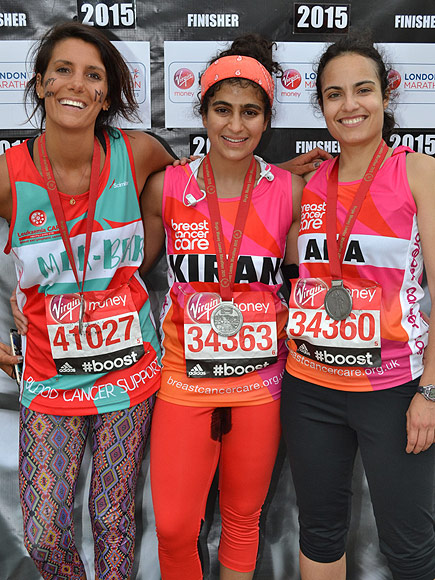I never realized how much of an effect my period has on my training. That goes for any woman. I always thought when I lacked energy or felt weaker or what have you, I thought that was just me sucking.
After coming in Dead Fucking Last at a Time Trial Championship, I wanted to find out what went wrong that day and how I could prevent it from happening in the future. After books and articles and podcasts, I was recommended Stacy Sim’s book, Roar. I read it and learned a lot about my menstrual cycle and I wanted to learn how best to structure workouts. Instead of working against the natural bullshit that comes with having a period and crazy hormones, I wanted to find a way to incorporate all these fluctuations.
This is what I found out.
The average menstrual cycle is 28 days long – some can be as short as 21 days and as long as 35.
There are two 14-day phases: Follicular Phase (Days 1-14) and Luteal Phase (Day 15-28).
My training plan changes well, daily, but let’s break these phases and the appropriate training into weeks.

Week One (Follicular Phase)
Day 1 – Start of your period and start of your menstrual cycle.
Follicular Phase begins (your exercise physiology is most like a man’s – strongest right now; you’re likely to feel less pain and recover faster.)
Day 5 / 6 – Ovaries start producing more estrogen
Low Hormone Phase (Day 1-14) – Eat about .35 gram of carbs per pound of bodyweight per hour (of training)
While you may have cramps and feel like a turd, your pain tolerance is actually at its highest right now. Your hormones are at their lowest, which means they’re not fucking with you right now.
Get your Hammerfest on. Go for PRs. Get gainz. Your body will do best with anaerobic workouts and you’re less sensitive to insulin.
Movement is also known to help with period symptoms.
Week Two (Follicular Phase)
Day 12 – Estrogen levels are high, luteinizing hormone is released which causes ovulation, and an egg is released from fallopian tubes.
Day 13 / 14 – Estrogen levels dip & Luteal Phase begins
Low Hormone Phase (Day 1-14) – Eat about .35 gram of carbs per pound of bodyweight per hour (of training)
Your Estrogen is ramping up, which means you’ll get more gains with weightlifting. Be careful though, because during Ovulation (Around Day 12), your joints are a bit more loose and the estrogen messes with collagen structure, so you’re more prone to injuries, particularly ACL tears.
Week Three (Luteal Phase)
Day 16 – Progesterone levels surpass estrogen to prepare the lining of the uterus for egg implantation; exercise will feel harder while hormones are high.
VO2 Max and Lactate Threshold are unaffected throughout your cycle but your reaction time, neuromuscular coordination, and manual dexterity diminishes when your hormones are high, so Days 16-24.
Also, during this time, blood sugar levels, breathing rates, and thermoregulation are negatively impacted.
High Hormone Phase (Day 15-28) – Eat more carbs, about .45 gram of carbs per pound of bodyweight per hour (of training)
Your body isn’t going to work out best at high intensity and it’s going to prefer to burn fat instead of glycogen. You may also retain more water in this phase.
This would be a good time for Lower Intensity workouts, like base training (Zone 1 and 2; aerobic instead of anaerobic), for example.
Week Four (Luteal Phase)
5 days before start of period – Estrogen and Progesterone levels peak. This is where you experience premenstrual symptoms.
High estrogen levels negatively impact the growing capacity of muscle and progesterone revs up the breakdown of muscle tissue, making it more difficult to access amino acids. This means that muscle breaks down faster during hard efforts. When Progesterone is high (Day 15-28), you definitely want to make sure you get 20-25 grams of protein within 30 minutes of finishing your session.
Estrogen reduces your body’s ability to burn carbs but increases its ability to burn fat. This works for endurance athletes who have trained their bodies to burn fat as energy, but for high intensity activities, you need to eat more carbs.
Our plasma volume drops which is the volume of fluid in our blood. When that’s low, our blood is thicker, which means less blood is pumped with every heartbeat, making exercise feel harder because you don’t sweat as efficiently to cool off.
Progesterone raises our body temperature, so during the high hormone phase, we’ll feel hotter. Progesterone also increases the amount of sodium you sweat out (called “hyponatremia”) so you should counteract this the night before an event by drinking hydration drinks that include sodium.
5-7 days before your period, step up your cramping pre-game prevention and take magnesium, omega-3 fatty acids, and 80-milligram aspirin every day. This supposedly helps prevent the pain from cramps.
Sim’s Action Plan for Power:
Performance during PMS
-250 milligrams of magnesium
-80 milligrams of aspirin
-1 gram of omega-3 fatty acids
Take those every night 7 days before your period starts
Pretraining
-Take 5 to 7 grams of BCAA’s to help with the lack of energy
In Training
High Hormone Phase (Day 15-28) – Eat more carbs, about .45 gram of carbs per pound of bodyweight per hour (of training)
Post Training
Progesterone is kind of an asshole. It breaks down muscle faster and inhibits recovery. When Progesterone is high (Day 15-28), you definitely want to make sure you get 20-25 grams of protein within 30 minutes of finishing your session.
Recommendations
- Track your period and your performance during the different phases (sleep, macronutrients, exercise)
- Workout in your fat-burning zone during the Luteal Phase to maximize fat-burning. Find your fat-burning zone by subtracting 20 from your Heart Rate Threshold. For example, mine is 174, so my fat-burning zone is 154.
- Eat protein. The jury’s out on this. Some recommend 1:1 protein to pound count while others recommend .8 grams of protein for every pound. Start tracking your protein intake to see where you’re at.
- Listen to your body.
Resources:
Thanks to my patrons who make my writing possible. You can become part of our club here:
Become a Patron!Disclosure: I’m a participant in the Amazon Services LLC Associates Program. When I link to products and services, those links may be affiliate links. If you click on any of those affiliate links and make a purchase within a certain time frame, I’ll earn a small commission, at no cost to you. I only link to products and retailers that I use myself and would recommend to a friend. Money earned keeps my website running and allows me to do what I love—which is writing. Thanks for your support.
